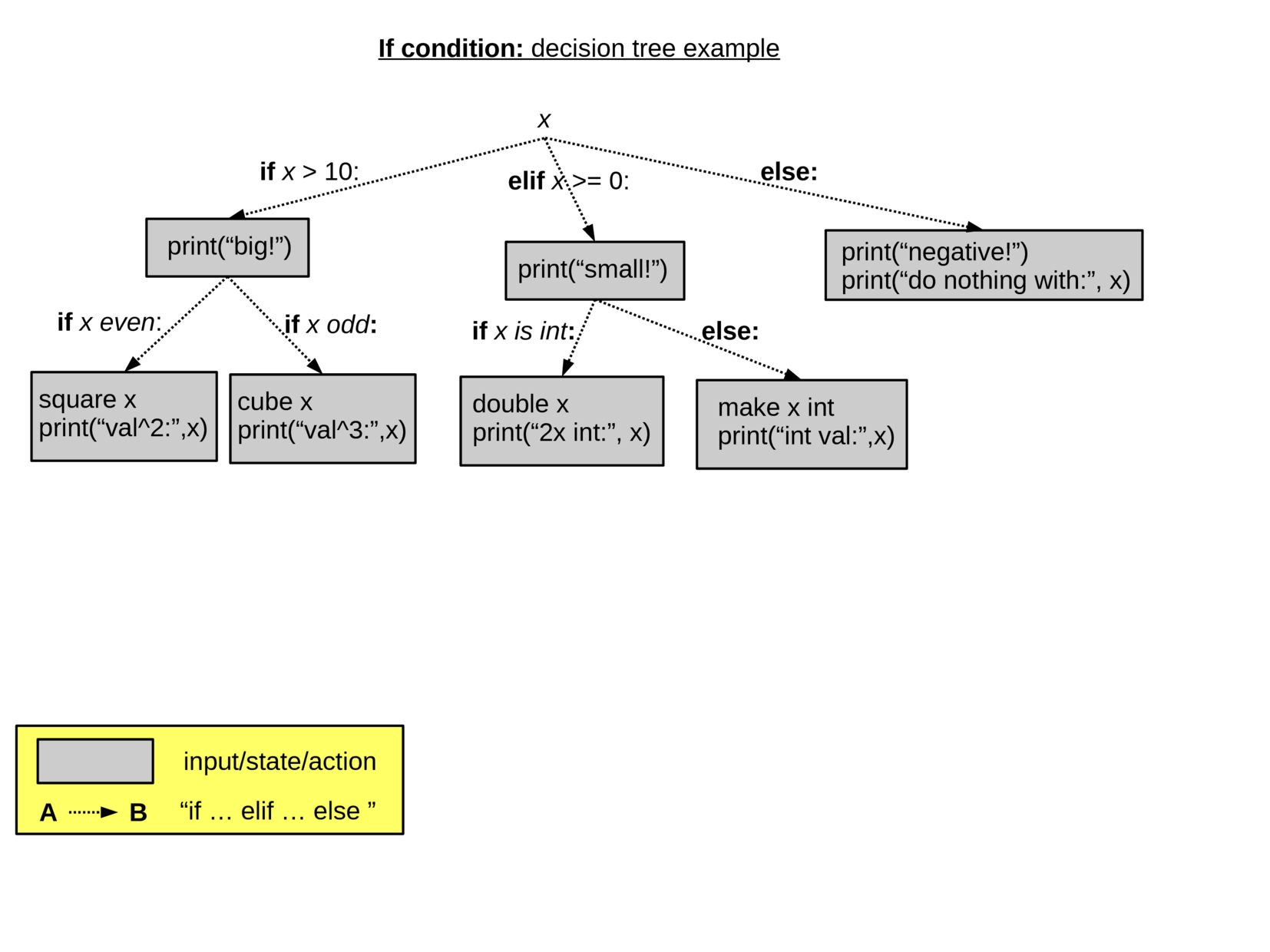27. Conditionals, II: Nesting¶
In progress.
27.1. Nested conditions¶
Consider the basic structure of the if/else statement from before:
if <some condition> :
<set of things>
else:
<other set of things>
This very generic, and there were no restrictions on the type of
commands that could be included in the <set of things> or <other
set of things>. What if one of those items were another conditional
of some kind?
That is certainly possible to have. Conditionals inside of other
conditionals is called nested conditionals. All of the same rules
of syntax and format from above will apply, and we just adopt the rule
that indentation combines additively. That is, if an if
expression starts on an already indented line, then the commands
inside of it are just indented one space further (still just one
indent relative to their associated if).
There quickly becomes a large number of possible ways to combine nested any if/elif/else structures. One example could be, "If x is an float, see if it is positive, negative or zero; otherwise, if it is a complex number, calculate its magnitude; otherwise, just print the number." In translating this to a program, we just have to remember which of any if/elif/else statements are in parallel with each other, and make sure those have the same indentation; any "interior" conditions just start with an indent already there to add to. It can be translated to:
1if type(x) == float :
2 print("x is a float!")
3 if x > 0 :
4 print("... and a positive one, at that.")
5 elif x < 0:
6 print("... and a negative one, at that.")
7 else:
8 print("... and a zero-valued one, at that.")
9elif type(x) == complex:
10 xmagn = np.abs(x)
11 print("x is a complex number of magnitude:", xmagn)
12else:
13 print("x is neither a float nor a complex, just:", x)
Each branch could contains several commands in addition to the conditionals. Again, it is a very flexible structure. However, the rules from earlier sections still just apply in all cases.
As the branching structure gets increasingly complicated, it can be difficult to keep track of what is a sub-condition of what. One way to help keep everything organized is to use a decision tree diagram, which can be much more easily translated into a code block of conditionals (and referred to later to check it). Here is an example decision tree for the present case:
Figure 1: Example case of conditional decision tree |
|---|

|
Notice how the levels of the decision tree directly mirror the indentations of the conditions in the coded version. The arrows in the diagram also map directly to the Boolean statements of each conditional. (In practice, one might opt for using abbreviations instead of the full print statements.)
tree structure example:
Figure 1: conditional example: decision tree structure |
|---|

|
27.2. Practice¶
Write an
ifcondition to check if a variable calledtest6is a negative integer. If it is, multiply it by-3and see if the result is a multiple of 9; if that is, then print "hello, my friend". In any other case, print "Oh, no, not you".